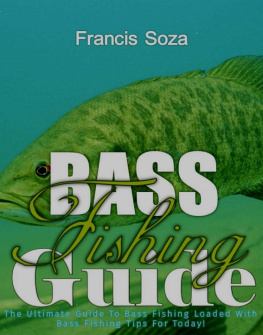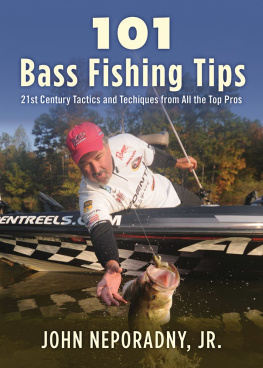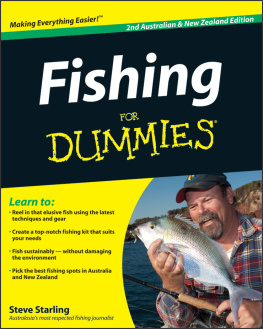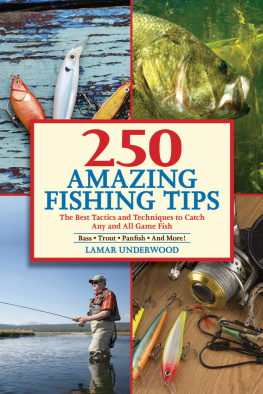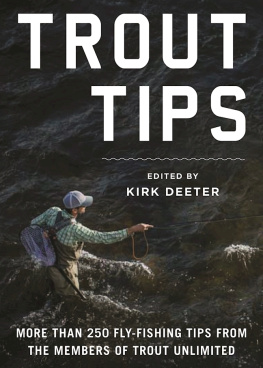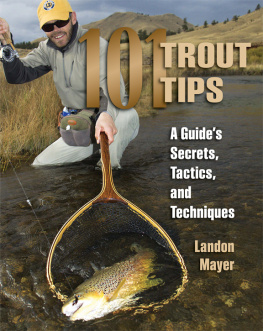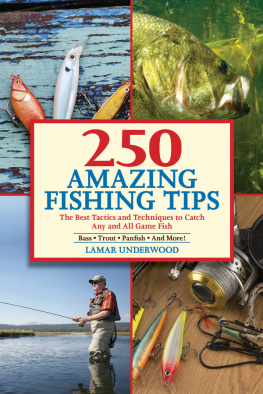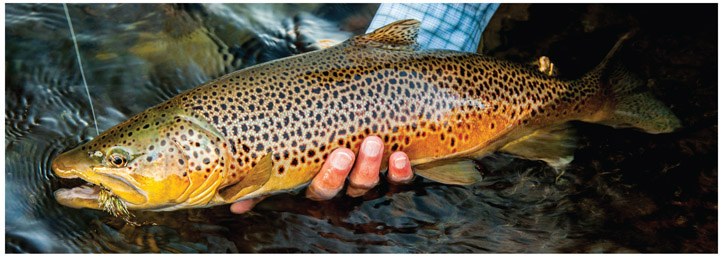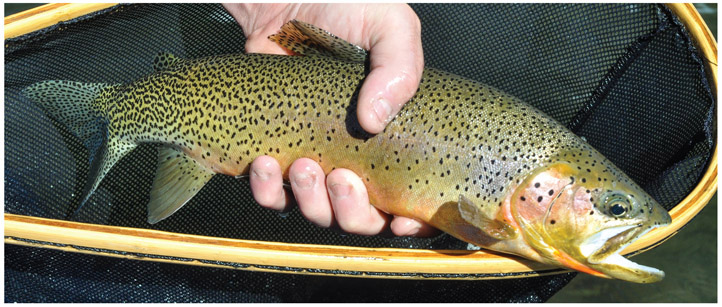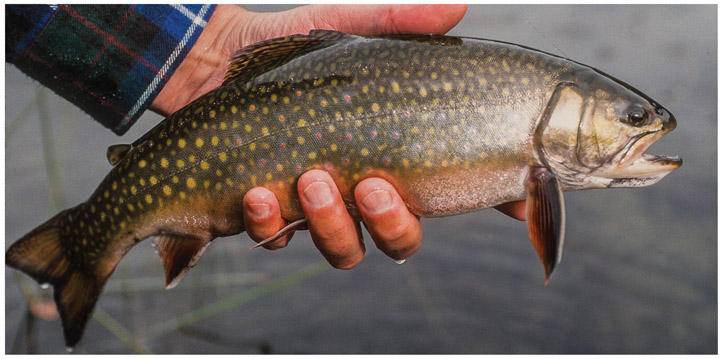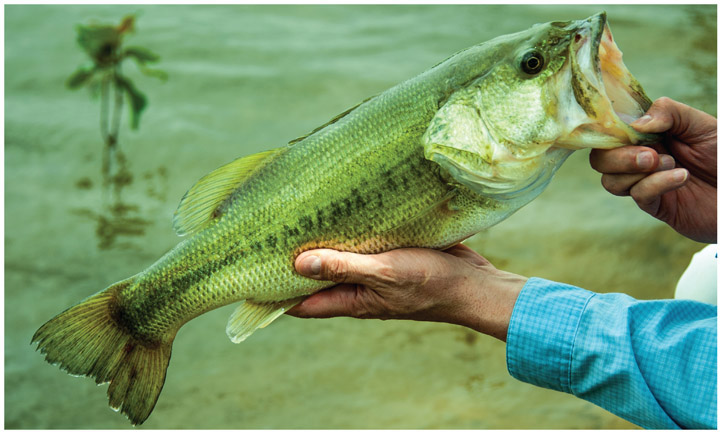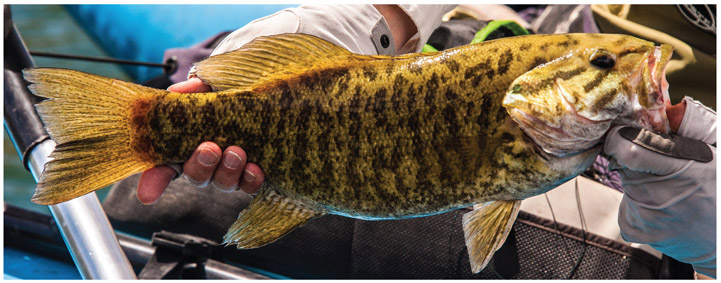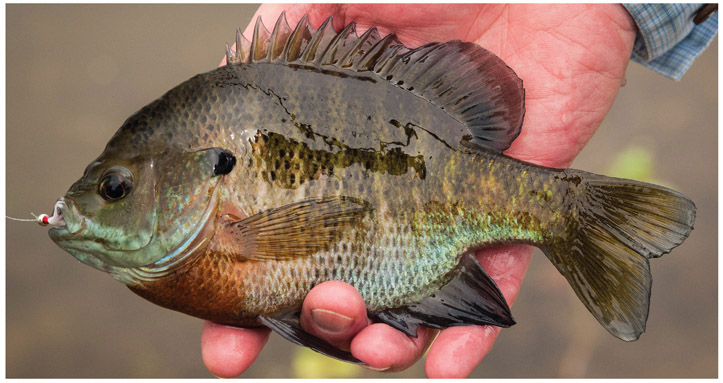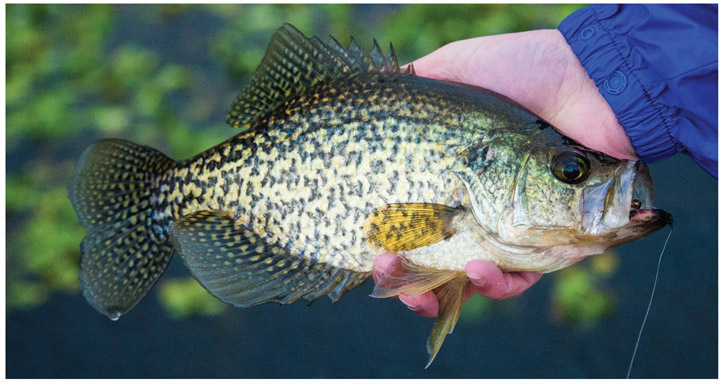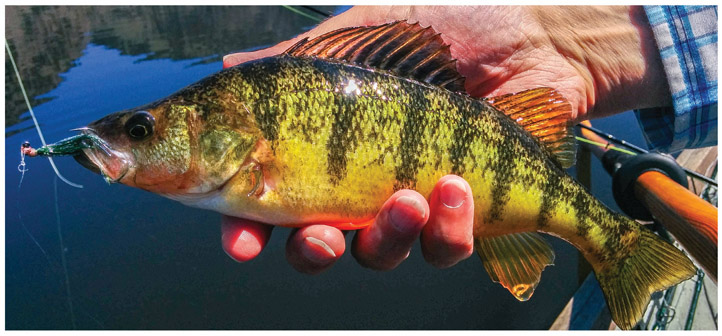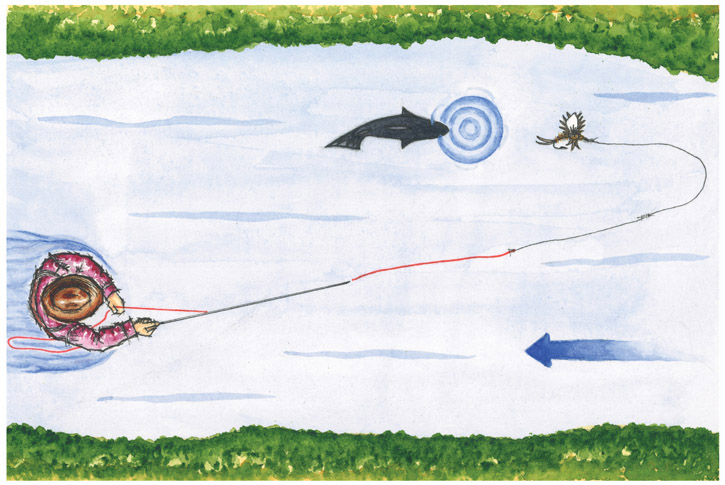Before you go out to catch them, you need to know the fishes this book will help you catch. Heres an introduction.
All trout are similar, but definitely not the same. The brook trout isnt actually a trout at all, but a close relative called a char. There are more trout (and char) species than the four below, but these four are by far the most common in North America, and the rainbow and brown are now common all over the world.
RAINBOW
Almost as inherently cagey as the brown, and just as cagey when conditions are right. Loves streams, including quick water, but like all trout loves lakes too. Often a wild leaper and heavy on speed and stamina. Green back, silvery flanks. A red stripe may run broad and vivid down each of its flanks or be entirely absent.
BROWN
Born smart, then grows smarter. Tends to like quiet currents but will hold in swift ones. Loves lakes too. A fair to good fighter. Truly brown (to tan) along flanks and back, some red spots, belly is yellow.
CUTTHROAT
Slow learner (but it can learn), prefers moderate to slow currents or the still water of lakes. Good fighter. Green back and gray or yellow flanks. Always some sort of orange, pink, or red slash along both sides of the jaw, sometimes faint but sometimes a big, vivid splash.
BROOK
Sometimes moody. Under the right conditions, perhaps even cagey. Prefers lakes and slow water in streams. Modest fighter. Its fall spawning colors are striking. Green back and flanks. There are always wormwood markings on a brookies back.
The basses and panfish (with a very few exceptions) prefer warmer to much warmer water than trout can tolerate. And dont think that warmwater fishes are just misshapen troutyou can be a fine trout fisher yet fail to catch many, or any, bass and panfish.
LARGEMOUTH BASS
Found in every state but Alaska, and in Mexico and Canada. Loves warm water but does fine up north thanks to summer water temperatures. Leaps and fights hard (though briefly). Tolerates only very slow currentsa true lake fish. Has a smudgy black horizontal stripe along each flank.
SMALLMOUTH BASS
Looks something like a largemouth, but has vertical stripes (if it has stripes at all) in place of the largemouths horizontal band. Likes quick, rocky streams but does just as well in slow, weedy ones and in lakes. Needs warm water at least a fair chunk of the year but cant handle the largemouths upper limit. Fights hard and long, and sometimes leaps. All over the United States and well up into Canada.
PANFISH
Bluegill
The most common and beloved panfish in North America. Fights hard for its small size (a 10-inchers a dandy), rarely jumps. Prefers lakes but does fine in lazy currents. Needs warm water. Often schools. Does have powder-blue gill covers.
Crappie
Crappies, both black and white, really bunch up (especially black crappies) for mating in spring. Run large for sunfishes (often a pound and a half, even two pounds). Crappies are rounded and flat-sided like other panfish, but silvery with dark markings.
Other Panfish
The list is long: redear, pumpkinseed, warmouth, green sunfish.... Theyre all well worth knowing and seeking. Use the bluegill as your model, or at least your starting point, for exploring most of the panfish. A few (yellow perch, rock bass, etc.) dont follow the bluegill model.
A yellow perch
Bonus Tip Fish Dont Like Meeting Expectations
Fish often act out of character. Brown trout are supposed to be smarter than rainbows; rainbows are supposed to fight harder than browns. Yet for three days on a creeping stretch of Montana river, I watched rainbows turn down flies and presentations the browns happily accepted, and watched the browns outleap and outrun the bows. All were wild fish. So although the descriptions in tips 1 and 2 are solid, dont expect fish to always adhere to them.
Now that youve made their acquaintance, its time to learn how to catch trout, bass, and panfish.
Question: How do you sneak up on a fish when you dont understand how it sees and hears? Answer: Poorly. So...
Fish see in nearly every direction but mostly seem to pay attention to whats in front and to the sides of them, not behind. In a current, theyre forced to face upstream. So, for example, if you approach a trout or smallmouth bass in a river from downstream, angling your cast upstream and across, and if youre far enough away, you wont likely be seen. If you need to present the fly downstream, so that youre upstream of the fish, youd better be well upstream, and probably crouching.
The underside of water is a mirror. Fish see things above the water through a clear little circle in that mirror. Draw two lines down from the opposite edges of the circle to the fishs eyes, and you have a near right angle. Immediately above the water, the angle changes to low: just 10 degrees. Both angles are consistent, so the deeper the fish holds in the water, the wider its viewa fish holding 3 feet down will have a better shot at seeing you than a fish holding only inches below the waters surface. (Dont get cocky, thoughthe fish inches down is also extra skittish, knowing its up where predators can snag it.)



